self-improvement
Unlock Your Full Potential with Arete
Imagine a life where excellence is your daily pursuit. Arete, the ancient Greek concept of excellence, demands that you strive for your highest potential in every aspect of life.
This idea is more than a goal; it is a way of living.
Arete calls you to push beyond your limits and evolve constantly.
It’s about being the best version of yourself every single day.
When you embrace arete, you refuse mediocrity.
You aim higher and achieve more.
It is not perfection, but the relentless effort to improve that defines true excellence.
"Arete is the courage to chase excellence, knowing the journey itself is the reward." – Mike Brewer Click To TweetShare this:
Responsibility: Own Your Path to Success
Taking responsibility is one key to success.
Own your actions and shape your destiny.
Excuses are easy, but they lead nowhere.
Embrace mistakes as education.
When you take charge, you inspire others.
Every decision, big or small, has power.
Success is a series of responsible choices.
True leadership begins when you take responsibility for your actions and decisions.
Share this:
The World as Your Mirror: Understanding Reflections in Everyday Life
Life often mirrors your emotions, thoughts, and actions. This reflection principle suggests that what you put into the world tends to check back in with you. It’s a concept seen in relationships, careers, and personal growth. When you approach situations with positivity, the world often responds in kind. Conversely, negativity can perpetuate more of the same.
This mirror effect can be seen as a tool for self-improvement. It encourages introspection and adjustment based on the feedback you receive from your environment. By understanding that your external circumstances often reflect your internal state, you can guide how you interact with the world.
Recognizing that “the world reflects you to you” enables you to guide your destiny actively. It’s about being mindful of your output because it directly influences what you attract.
"When you change the way you look at things, the things you look at change." – Mike Brewer Click To TweetShare this:
Steal This Secret: How Self-Control Transforms Into Pleasure
I want to encourage you to think about this: self-control can evolve into pleasure, surpassing the joy of bad behavior.
It begins with a crucial shift in perspective.
Imagine self-control not as a barrier but as a gateway to a richer, more satisfying life.
Each act of resistance strengthens your mental resilience, turning discipline into delight.
Over time, what was once a struggle becomes your source of happiness.
"True mastery of self-control is when the discipline itself becomes the reward." Mike Brewer Click To TweetThis transformation doesn’t happen overnight. It’s a journey of countless small victories.
But the payoff is immense: a life where you’re not just avoiding harm but actively crafting joy.
Embrace this approach, and watch as your self-control morphs into the most exquisite pleasure you’ve ever known.
Hashtags: #SelfControl #PleasureOverPain #DisciplineEqualsFreedom #MentalResilience #LifeTransformation #CraftingJoy #SelfImprovementJourney
Share this:
Embracing the SLED Philosophy: How to Suck Less Every Day

Photo by Jungwoo Hong on Unsplash
The SLED philosophy, conceptualized by Andy Bailey, is a powerful and transformative approach to personal and professional development. This philosophy, abbreviated as “Suck Less Every Day,” emphasizes the importance of continuous improvement and growth. Success is often equated with monumental achievements, the SLED philosophy offers a refreshing perspective centered on incremental progress and self-improvement.
At the core of this philosophy is the recognition of the human potential for growth and development. It acknowledges that perfection is unattainable and that there is always room for improvement in every aspect of our lives. This mindset encourages humans to embrace their imperfections, learn from their mistakes, and consistently strive to be better than they were yesterday.
The SLED philosophy can be applied to various domains of life, including personal development, professional growth, relationship building, and skill acquisition. Its versatility and practicality make it a universal tool for those seeking to enhance their lives in meaningful ways.
In personal development, the SLED philosophy encourages individuals to reflect on their actions, behaviors, and thoughts regularly. It promotes the idea of setting small, achievable goals that lead to gradual but significant changes over time. For instance, someone looking to improve their physical health might start by incorporating a short walk into their daily routine, gradually increasing the duration and intensity as they become more comfortable.
In a professional context, the SLED philosophy can be helpful. It fosters a culture of continuous learning and adaptability. Employees who embrace this mindset are more likely to seek feedback, take on new challenges, and contribute innovative ideas to their teams.
Moreover, the SLED philosophy has implications for leadership and management. Leaders who adopt this approach are likely to foster environments where growth and learning are prioritized. They understand the importance of creating safe spaces for their teams to experiment, fail, and learn without fear of judgment or reprisal. This not only enhances the team’s overall performance but also contributes to a more positive and inclusive workplace culture.
In relationships, the SLED philosophy promotes empathy, understanding, and communication. By acknowledging our own flaws and working to improve them, we become more patient and compassionate towards others. This approach can strengthen bonds, resolve conflicts, and create deeper connections with those around us.
The implementation of the SLED philosophy requires a shift in mindset. It involves embracing a growth mindset, where challenges are viewed as opportunities for learning rather than obstacles. It also necessitates a commitment to self-reflection and a willingness to step outside one’s comfort zone.
The beauty of the SLED philosophy lies in its simplicity and applicability. It doesn’t demand drastic changes or unattainable goals; instead, it champions the power of small, consistent efforts. Over time, these incremental improvements accumulate, leading to significant transformations.
The SLED philosophy by Andy Bailey offers a pragmatic and effective approach to self-improvement. It encourages individuals to continuously strive for betterment in all aspects of their lives, fostering a culture of growth, learning, and resilience. By adopting this philosophy, we can unlock our potential and progressively enhance our lives, making each day a step towards a better version of ourselves.
Hashtags #SLEDPhilosophy #AndyBailey #PersonalGrowth #ProfessionalDevelopment #ContinuousImprovement #SelfImprovement #GrowthMindset #Leadership #LifeLessons #DailyImprovement

